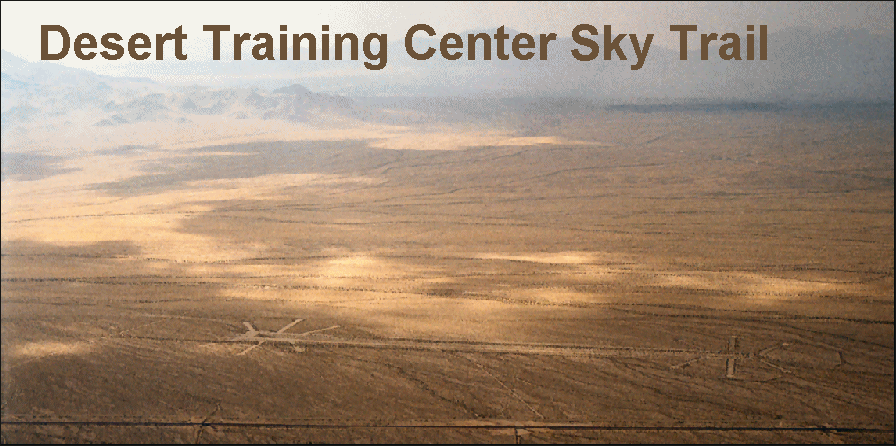
Desert Survival Considerations
In the event of a forced landing in the desert, your chances of survival are improved if you've planned ahead for that eventuality. Here is some information to assist your planning:
In case of emergencies, contact the Federal Interagency Communications Center at: (888) 353-6518 or 911.
The area has no cell phone service.
Summer temperatures routinely exceed 110 degrees Fahrenheit.
Always tell someone your plans with your expected route and time of return. Stick to your itinerary.
Carry plenty of water. Drink at least a gallon per day.
Take food.
Never go alone.
Take a jacket first aid kit, sunscreen sunglasses, signal mirror, flashlight and matches. Dress in light colored, loose fitting clothes. Long-sleeves, long pants, a hat, and sturdy shoes. A handheld radio.
Be careful of snakes: "Those three day problems were killers with cactuses for pillows and side winder rattlers or scorpions for bed fellows ..." -- by Eugene Jones in "Buzzings of Company 'B'"
Take plenty of drinking water: My thirst and sweating were such that I drank about a half liter of water each hour. Wear clothing that will protect your skin from the sun; I even wore a towel under my cap to cover the back of my neck. Use sun block on exposed skin. Wear shoes that are appropriate for walking in hot sand.
Here is an account of one of E/48 AIR's (which later became B/23
AIB) experiences on 5 May 1943:
"Through Texas, Arizona and New Mexico we traveled and landed on the Mohave
Desert at Camp Cox Comb, Calif. surrounded by Cox Comb, Palen and Iron
Mountain and not the beautiful orange groves and lovely women we had always
thought of when the Golden State was mentioned. Our experiences were great
but very hard on the desert. I shall never forget the fifteen miles march
across Palen Pass that the infantry had to make on May fifth, nor shall I
forget how bad, physically, our men looked as they staggered in for food and
a drink of water that evening. Some of the men had chewed gum to prevent
their mouth from becoming so dry, but even this didn’t keep their mouth
moist and the gum had to be pulled out in strings. Several passed out and
had to be carried in. These incidents were not a matter of not being a man,
but a matter of overtaxing good men’s strength."
-- by Eugene Jones in "Buzzings of Company 'B'"
SUN SAND and SURVIVAL An Analysis of Survival Experiences in Desert Areas January 1953
Emergencies
Carry an
emergency kit
and a warm jacket
in your airplane. Your kit should contain aerial flares and smoke signals, a
signal mirror, and reflective Mylar “space blankets,” as well as a
snake-bite kit, and medical supplies. You should also carry
plenty of drinking water (at least one gallon per person) for emergency use, and while en route on the
DTC Sky
Trail. This desert area is very sparsely populated and assistance
can be a great distance from a forced landing site. If you are forced
down, stay with your aircraft, or if you are sure you can make it, attempt
to stop a motorist on a nearby road. Activate your Emergency Locator Transmitter
(ELT). Attempt
to contact any aircraft you see or hear in the sky on the emergency
frequency: 121.5 MHz. It will be cold at night in the desert, so keep
warm in a sheltered place with the Mylar blankets and layers of clothes.
Cellular telephone service in this area is the exception; don't count on it.
